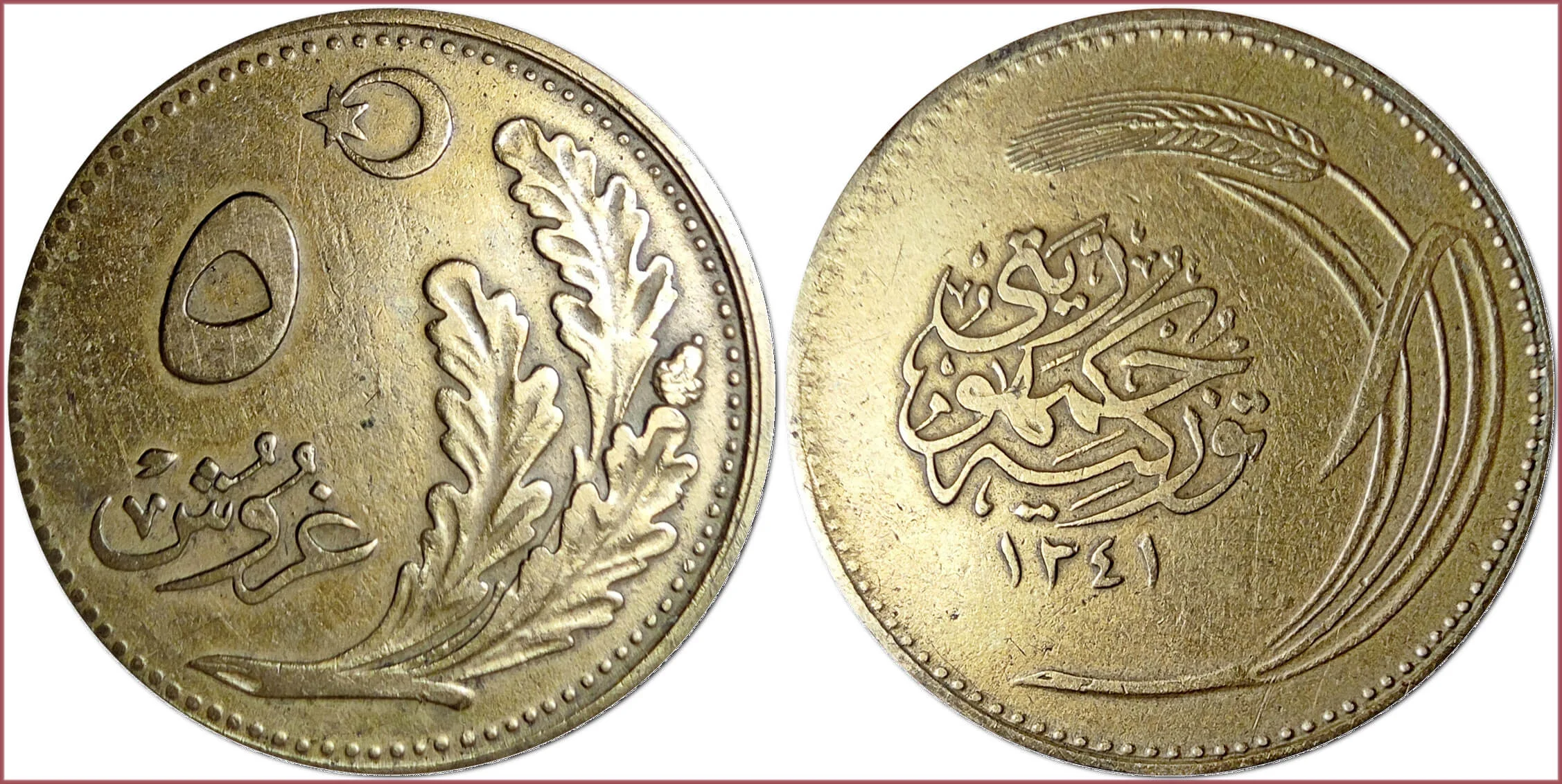KURUŞ: COIN OF TURKEY
5 kuruş, 1925: Republic of Turkey
Date on coin: 1341 (Rumi calendar: was officially used by the Ottoman Empire and the Republic of Turkey as its successor during 1839-1926) = 1925 (Gregorian calendar).
٥: 5.
قرش: kuruş.
Star and crescent (main elements of the state emblem of Turkey) above oak branch.
جمهورية تركيا: Republic of Turkey.
١٣٤١: 1341 (coin issue date by the Rumi calendar).
Stalk of wheat.
Mintage: 23.545.000.
Mustafa Kemal Atatürk era coin. After the defeat of the Ottoman Empire in the World War I (1918), he led the Turkish national revolutionary movement, creating a new republican state based on nationalism. He managed to carry out a number of decisive reforms quite quickly: the elimination of the sultanate, the proclamation of the republic, the introduction of secular life (separation of religion from the state), the reform of clothing, the Latinization of the alphabet (instead of the Arabic alphabet), the introduction of the Gregorian calendar. Turkey considers Atatürk its national hero.
- Aluminium-bronze: 22.5 mm - 3.9 g
- Reference price: 7$
COIN KURUŞ — WHERE & WHEN (coins catalog: by names & emitents)
- REPUBLIC OF TURKEY (1924-...): kuruş = 40 para = 1/100 lirasi (Turkish lira)
- OTTOMAN EMPIRE (17th-20th centuries): kuruş = 40 para = 120 akçe
- CRIMEAN KHANATE (1777): kuruş = 8 beshlik
About the name of the coin kuruş (kurush): this Turkish term comes from the name of the old French coin "grossus denarius Turnosus" (gros tournois) which was very common in the Middle Ages. That is, kuruş has a similar etymology as a number of historical European coins — grosz, groschen, groten, grosso, garas, groat...
Note that in turn, several other coins of the former territories of the Ottoman Empire got their name from kuruş: gersh, qirsh.
In Europe, at one time, another name for the kuruş was fixed — the piastre, so there is some uncertainty with the names of the coins of some states: some series of coins are called kuruş, others — piastre.
Sometimes the so-called new kuruş (yeni kuruş), which was temporarily minted in Turkey during 2005-2008, is considered as a separate numismatic unit.

